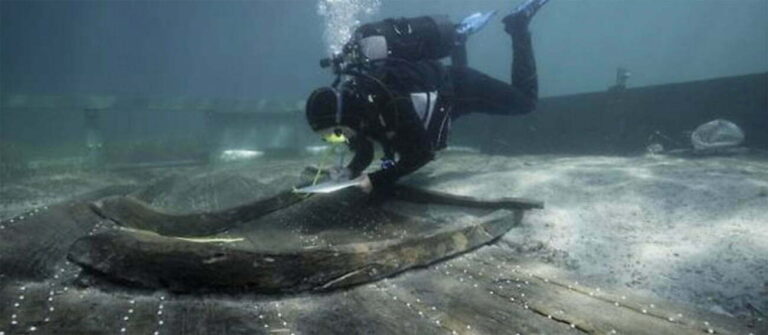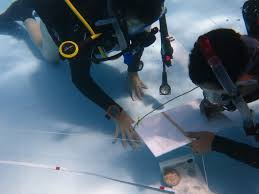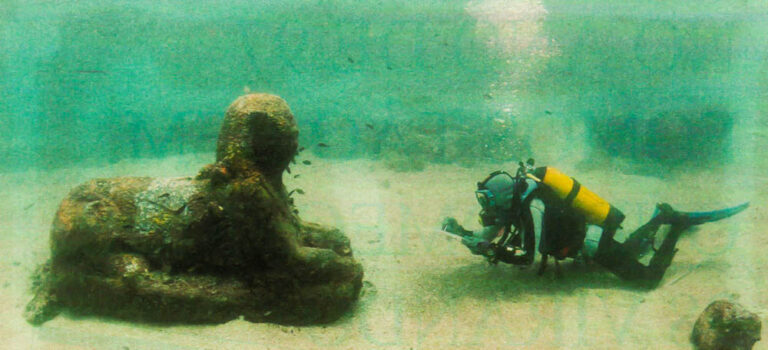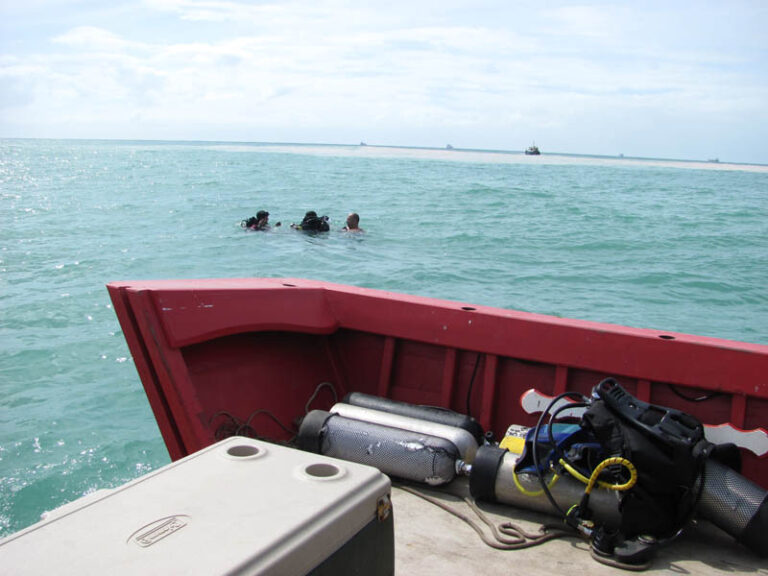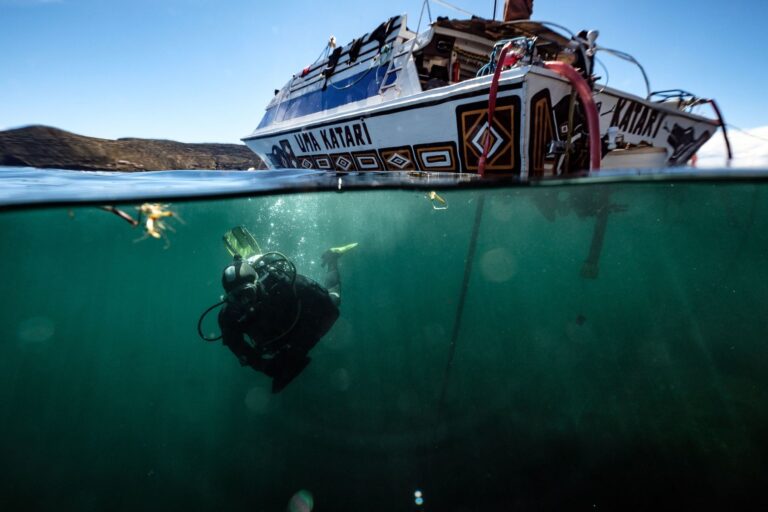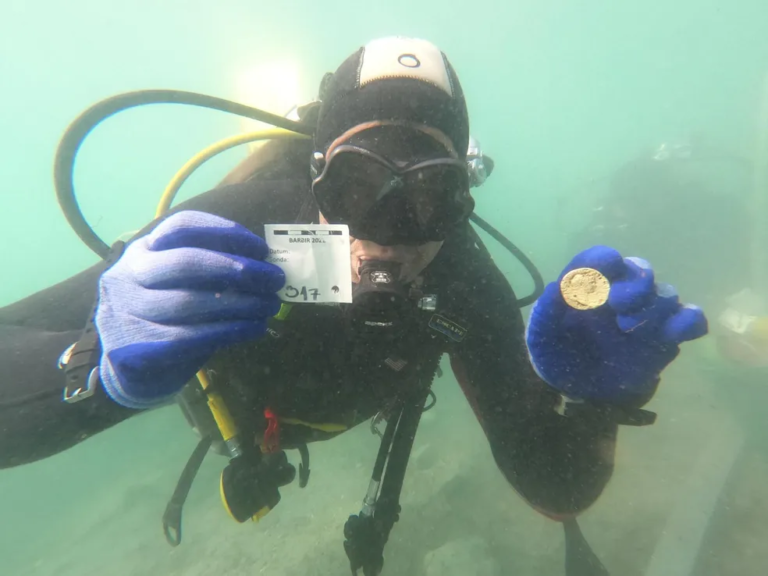Sonar Technology: Uncovering Underwater Mysteries
Sonar technology plays a vital role in underwater exploration, uncovering mysteries that lie beneath the vast ocean depths. With its ability to transmit and receive sound waves, sonar allows us to navigate and map the ocean floor, locate submerged artifacts, and study marine life and their habitats. The fascination and curiosity surrounding underwater mysteries have driven scientists and researchers to utilize sonar technology to unravel the secrets of the deep. In this article, we will delve into the world of sonar technology and explore how it assists in uncovering these captivating underwater mysteries.
Sonar technology, short for Sound Navigation And Ranging, is a technique that involves the use of sound waves to navigate and detect objects underwater. By emitting sound pulses and analyzing their reflections, sonar systems are able to create detailed images of the underwater environment. Understanding how sonar works is crucial to comprehend its significance in uncovering underwater mysteries.
There are several types of sonar technology used in underwater exploration. These include mapping sonar, which aids in accurately charting the ocean floor, and imaging sonar, which allows researchers to identify and locate submerged objects, such as shipwrecks and artifacts of ancient civilizations. Additionally, sonar technology plays a pivotal role in marine biology research, enabling scientists to study marine life and their habitats in detail. Other applications of sonar include underwater communication systems and fish finders used by anglers.
Uncovering underwater mysteries is one of the most captivating aspects of sonar technology. By utilizing advanced sonar systems, researchers have been able to explore famous underwater mysteries, such as the discovery of the Titanic. Sonar helps to navigate through the depths and reveal the hidden secrets of these long-lost treasures. Moreover, sonar technology has proven instrumental in solving cold cases, aiding in the search for missing ships or planes that have disappeared beneath the waves.
As technology advances, sonar systems continue to evolve. Recent advancements include multi-beam sonar and side-scan sonar, which enhance accuracy and resolution in underwater imaging. These advancements have opened up new possibilities for researchers to uncover even more underwater mysteries. Ongoing research and development in sonar technology are further pushing the boundaries of exploration.
However, sonar technology is not without its challenges and limitations. Interference from underwater conditions, such as marine life and geological features, can affect the accuracy of sonar readings. Additionally, depth range, resolution, and target identification can pose limitations in certain underwater environments. Despite these challenges, the potential future advancements in sonar technology hold great promise, with artificial intelligence and machine learning expected to play a significant role in improving sonar data analysis.
In conclusion, sonar technology is a powerful tool in uncovering underwater mysteries. By combining innovation and curiosity, researchers have been able to explore the depths of the ocean and shed light on ancient civilizations, lost artifacts, and hidden wonders. Continued advancements in sonar technology will undoubtedly contribute to further discoveries in deep-sea exploration and the unraveling of new underwater mysteries.
Table of Contents
Understanding Sonar Technology
Sonar technology, also known as Sound Navigation And Ranging (sonar), plays a significant role in underwater exploration by allowing scientists and researchers to uncover the mysteries hidden beneath the surface of the water. This section will delve into the fundamental principles and types of sonar technology used in this field.
Sonar stands for Sound Navigation And Ranging. It is a technique that utilizes sound waves to navigate and explore underwater environments. By emitting sound signals and measuring their reflections, sonar systems enable the creation of detailed maps and the detection of underwater objects.
The underlying principle behind sonar technology lies in the sound waves and their behavior underwater. When a sound signal is emitted by a sonar device, it travels through the water and encounters various objects and obstacles. These sound waves then reflect back towards the sonar device, allowing it to determine the distance between the object and the device.
There are several types of sonar technology employed in underwater exploration. Active sonar involves the emission of sound signals by the device, which then wait for the reflected waves to bounce back. This type of sonar enables precise mapping of the ocean floor and the detection of underwater objects, such as shipwrecks or submerged artifacts.
On the other hand, passive sonar technology relies on listening to underwater sounds without emitting any signals. This allows researchers to study marine life and their habitats, as well as monitor underwater communication systems and find fish through the use of fish finders.
In addition to these types of sonar technology, there are also advanced techniques like multi-beam sonar and side-scan sonar. Multi-beam sonar systems use multiple beams to capture a wider area, while side-scan sonar produces detailed images of the seafloor. These advancements in sonar technology have greatly improved accuracy, resolution, and the ability to explore and uncover underwater mysteries.
In conclusion, a thorough understanding of sonar technology is essential in order to comprehend its significant role in underwater exploration. By defining sonar and explaining its principles, as well as discussing the various types of sonar technology used, we can grasp the importance of this technology in uncovering the mysteries hidden beneath the depths.
Applications of Sonar Technology
Sonar technology plays a crucial role in various applications within underwater exploration. One such application is mapping the ocean floor, where sonar technology is utilized to create detailed maps of the underwater terrain. By emitting sound waves and measuring their reflection, sonar systems can accurately determine the depth and contours of the ocean floor. This information is invaluable for understanding the topography of the seabed and can assist in various industries such as offshore oil and gas exploration, submarine cable installation, and seafloor mining.
Additionally, sonar technology aids in locating and identifying underwater objects. This includes the discovery of shipwrecks, submerged artifacts, and other historical remnants. By utilizing sonar scanning techniques, researchers can precisely locate and visually reconstruct these objects, providing valuable insights into past events and historical contexts. This use of sonar is particularly significant in underwater archaeology, as it enables scientists to study ancient civilizations and their remnants that are often hidden beneath the ocean’s depths.
Sonar technology also finds major application in the field of marine biology research. Scientists employ sonar systems to study marine life and their habitats. By analyzing the data collected through sonar, researchers can gain comprehensive knowledge about the distribution and behavior of marine organisms. This information is vital for understanding ecosystem dynamics, identifying critical breeding and feeding areas, and even mitigating the impact of human activities on marine life.
Furthermore, sonar technology has a range of other applications, including underwater communication systems and fish finders. Underwater communication systems utilize sonar technology to transmit signals over long distances in the water, enabling effective communication between divers or underwater vehicles. Fish finders, on the other hand, utilize sonar to locate and track fish schools, helping fishermen identify the best fishing spots and optimize their catch.
The diverse applications of sonar technology in mapping the ocean floor, locating underwater objects, studying ancient civilizations, researching marine biology, and facilitating underwater communication and fishing make it an indispensable tool in the field of underwater exploration. As technological advancements continue to enhance sonar systems, uncovering new underwater mysteries and expanding our understanding of the underwater world becomes increasingly achievable.
Uncovering Underwater Mysteries
Sonar technology has played a crucial role in uncovering captivating underwater mysteries that have long intrigued us. One example of its remarkable abilities is the discovery of the Titanic, a previously lost vessel with an intriguing history. Through the use of sonar technology, researchers were able to explore and uncover this remarkable underwater mystery.
Sonar technology aids in uncovering underwater mysteries by providing researchers with a detailed picture of the underwater environment. By emitting sound waves and analyzing their reflections, sonar allows scientists to map underwater landscapes and identify intriguing objects hidden beneath the surface. In the case of the Titanic, sonar technology played a pivotal role in locating the wreckage and providing insights into this tragic event.
The importance of sonar in solving cold cases cannot be overstated. Missing ships and planes that have long puzzled investigators can now be explored and potentially solved through the use of sonar technology. By meticulously scanning the sea floor and analyzing the data collected, researchers can piece together the puzzle and provide answers to these enigmatic cases.
Beyond solving specific mysteries, the utilization of sonar technology has broader implications for the field of underwater exploration. Developments in sonar technology continue to enhance its capabilities, allowing researchers to delve deeper into the unknown. With ongoing advancements in multi-beam sonar and side-scan sonar, researchers can achieve greater accuracy and resolution in their underwater investigations, providing them with a clearer understanding of the underwater world.
As we continue to follow developments in sonar technology, it is evident that there is much more to uncover beneath the depths of the ocean. The combination of sonar technology with other emerging technologies, such as artificial intelligence and machine learning, holds great potential for further advancing underwater exploration. These advancements will undoubtedly aid in not only uncovering new underwater mysteries but also gaining deeper insights into the secrets of the deep sea.
In conclusion, sonar technology plays a significant role in uncovering underwater mysteries that have fascinated us for centuries. By enabling researchers to explore and analyze underwater environments in ways previously unimaginable, sonar technology expands our knowledge of the underwater world and provides us with answers to long-standing questions. As advancements in sonar technology continue to be made, we can expect to unravel even more mysteries, bringing us closer to understanding the secrets hidden deep beneath the surface. So let us continue to embrace and explore the possibilities of sonar technology in unlocking the mysteries that lie below.
Advancements in Sonar Technology
Sonar technology has undergone significant advancements in recent years, revolutionizing underwater exploration and uncovering mysteries hidden beneath the ocean’s depths. One major breakthrough is the development of multi-beam sonar, which utilizes multiple sound beams to provide a more comprehensive view of the seafloor. This technology allows for faster and more accurate mapping of underwater topography, enabling scientists to create detailed three-dimensional models of underwater landscapes.
Another notable advancement in sonar technology is side-scan sonar, which uses sound waves to create high-resolution images of objects on the seafloor. This innovation has been instrumental in locating and identifying underwater objects, such as shipwrecks and submerged artifacts. The detailed images produced by side-scan sonar provide valuable insight into historical events and offer a glimpse into the past.
These advancements in sonar technology have greatly improved accuracy and resolution, enhancing our understanding of the underwater world. Scientists and researchers can now explore underwater environments with greater precision and efficiency, shedding light on mysteries that have remained hidden for centuries.
Ongoing research and development in sonar technology are focused on further enhancing its capabilities. Scientists are exploring ways to increase the depth range of sonar systems, allowing for exploration in deeper waters that were previously inaccessible. Additionally, efforts are being made to improve target identification, enabling researchers to differentiate between various underwater objects with greater accuracy.
The potential of sonar technology continues to expand, driven by advancements in artificial intelligence and machine learning. These technologies can enhance the analysis of sonar data, enabling faster and more accurate interpretation of underwater images. With the integration of AI and machine learning, researchers are able to uncover new underwater mysteries and unlock the secrets of the deep sea.
In conclusion, the advancements in sonar technology have significantly transformed underwater exploration. The development of multi-beam sonar and side-scan sonar has revolutionized the accuracy and resolution of underwater imaging, allowing researchers to uncover underwater mysteries with greater precision. Ongoing research and development continue to push the boundaries of sonar technology, promising a future filled with exciting possibilities for deep-sea exploration and the discovery of new underwater wonders.
Challenges and Limitations
One of the main challenges faced by sonar technology is interference from underwater conditions. The underwater environment can be filled with various obstacles and materials that can affect the accuracy and reliability of sonar signals. For example, seaweed, rocks, and other marine vegetation can obstruct sound waves and cause distorted readings. Moreover, turbulence and strong currents can increase background noise, making it harder to distinguish between signals from underwater objects and natural disturbances.
Another limitation of sonar technology is its depth range. The effectiveness of sonar decreases as the depth increases. At great depths, the signal strength weakens and the quality of the data collected diminishes. This limitation makes it more challenging to explore and study deep-sea environments and uncover mysteries hidden in the abyss.
Resolution is another aspect that poses limitations to sonar technology. The ability to accurately identify targets and distinguish between different objects underwater can be constrained by the resolution capabilities of the sonar system. A lower resolution can make it difficult to discern fine details or identify small objects, inhibiting the full potential of sonar technology in underwater exploration.
Despite these challenges and limitations, ongoing research and development in the field of sonar technology continue to address these issues. Advancements in signal processing techniques and the integration of artificial intelligence and machine learning algorithms are expected to improve the accuracy and reliability of sonar data analysis. These advancements will help overcome obstacles caused by underwater conditions and enhance the depth range and resolution capabilities of sonar technology.
In conclusion, while sonar technology has revolutionized underwater exploration and played a crucial role in uncovering underwater mysteries, it still faces certain challenges and limitations. Interference from underwater conditions, depth range limitations, and resolution constraints are all factors that require further attention and innovation. Nevertheless, with continuous advancements and improvements in sonar technology, these challenges can be overcome, expanding our knowledge of the underwater world and enabling us to uncover new and exciting mysteries that lie beneath the surface.
Future Prospects
As technology continues to advance at a rapid pace, the future of sonar technology holds great promise for uncovering even more underwater mysteries. One area of potential advancement lies in the integration of artificial intelligence (AI) and machine learning algorithms into sonar data analysis. By utilizing these cutting-edge technologies, researchers can enhance the accuracy and efficiency of underwater data interpretation.
The impact of AI and machine learning on sonar data analysis is immense. These technologies have the capability to learn from vast amounts of data and make predictions and interpretations that can greatly aid in the discovery and exploration of underwater environments. By analyzing patterns and correlations in sonar data, AI can help researchers identify potential underwater anomalies, uncharted regions, and even hidden archaeological sites.
In addition to improved data analysis, future advancements in sonar technology have the potential to revolutionize deep-sea exploration. Currently, the limitations of depth range and resolution hinder our ability to explore the most inaccessible parts of the ocean. However, ongoing research and development aim to overcome these obstacles, allowing us to delve deeper and discover new underwater mysteries that were previously unknown to us.
With the aid of advanced sonar technology, scientists and explorers envision the possibility of uncovering ancient civilizations, unlocking the secrets of submerged cities, and unraveling the mysteries of legendary sea creatures. The application of sonar in deep-sea exploration opens up a whole new realm of possibilities, offering us a glimpse into the hidden depths of our planet.
In conclusion, the future prospects of sonar technology are indeed exciting. The integration of AI and machine learning, coupled with advancements in depth range and resolution, promises to revolutionize the field of underwater exploration. As we continue to push the boundaries of technological innovation, the mysteries that lie beneath the ocean’s surface may no longer remain hidden. By staying informed and following the developments in sonar technology, we can actively participate in the unraveling of underwater mysteries and deepen our understanding of the vast and enigmatic world beneath the waves.
Conclusion
In conclusion, sonar technology plays a crucial role in uncovering underwater mysteries and expanding our knowledge of the underwater world. The significance of sonar technology cannot be overstated, as it allows us to explore the depths of the ocean and discover hidden treasures. By using sound waves and their reflection, sonar technology enables us to map the ocean floor, locate shipwrecks and submerged artifacts, and even study ancient civilizations through underwater archaeology.
One of the key applications of sonar technology is in marine biology research. Sonar assists scientists in studying marine life and their habitats, providing valuable information for conservation efforts. Additionally, sonar technology has been instrumental in solving cold cases, such as locating missing ships or planes. It has played a pivotal role in uncovering famous underwater mysteries, like the discovery of the Titanic.
Recent advancements in sonar technology, such as multi-beam sonar and side-scan sonar, have greatly enhanced its accuracy and resolution. These advancements have increased our ability to explore and understand the underwater world. Ongoing research and development in sonar technology promise even more exciting possibilities in the future.
However, sonar technology also faces challenges and limitations. Underwater conditions can interfere with the accuracy of sonar readings, and the depth range, resolution, and target identification have their limitations. Despite these challenges, the future prospects of sonar technology are promising. Artificial intelligence and machine learning have the potential to improve sonar data analysis and shape the future of underwater exploration.
In conclusion, sonar technology is a powerful tool that unlocks the mysteries hidden beneath the ocean’s surface. It expands our knowledge, enabling us to uncover underwater mysteries and discover new wonders. As readers, it is important for us to stay informed and follow the developments in sonar technology, as they continue to shape the future of underwater exploration.


